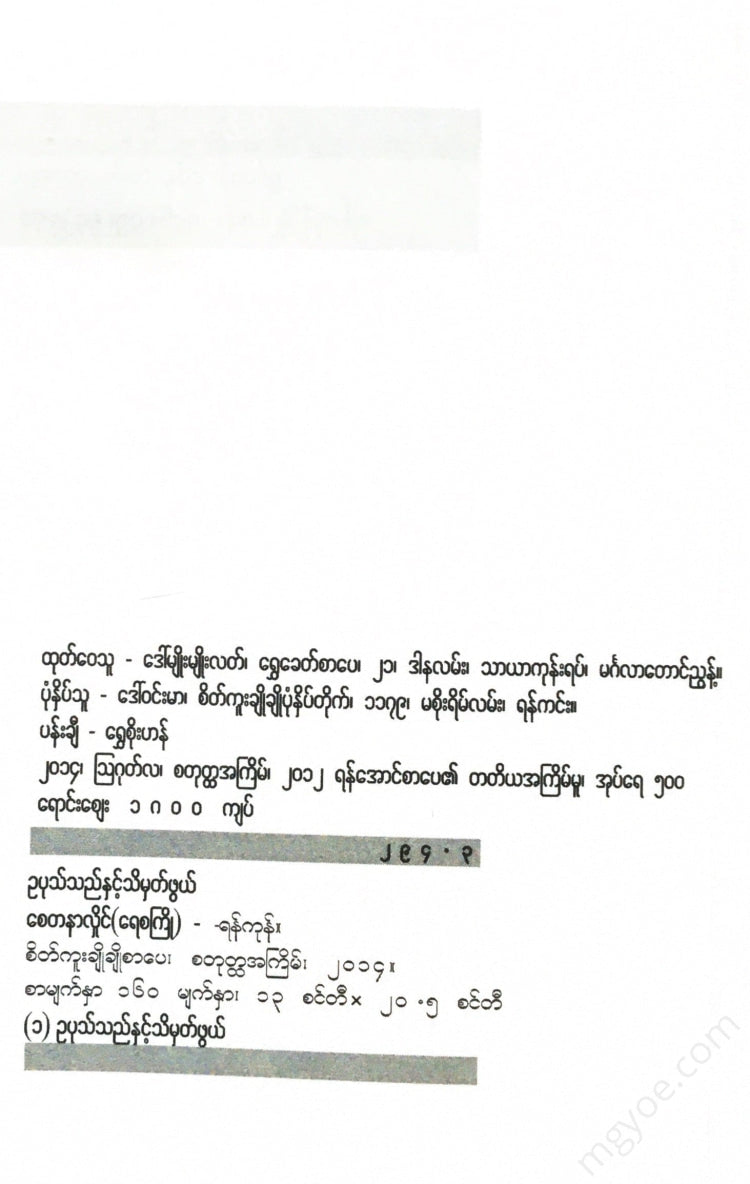စိတ်ကူးချိုချိုစာပေ
Saetna Hlaing (Resa Kyaw) - It is known as the Upath.
Saetna Hlaing (Resa Kyaw) - It is known as the Upath.
Couldn't load pickup availability
Chapter (1)
Maintaining morality
Every Buddhist observes his or her own precepts. In particular, they observe the Five Precepts. Precepts are good conduct. In other words, they are conduct that must be maintained.
In this practice, there are two types: maintaining and doing well. Maintaining well means not committing physical or verbal actions. Doing well means that all good deeds cannot be separated from virtue. They can only occur well in the mind of a virtuous person. Therefore, virtue is the cause of all good deeds, and doing things that increase good deeds is doing well.
In fact, virtue is called virtue because it is gentle in dealing with physical and mental karma, and because it works to increase the levels of meritorious deeds.
That precept is according to the Abhidhamma method.
1. Kindness is virtue = Kindness is virtue.
2. Virtue = The three virtues of virtuous conduct are called virtue.
3. Anabhizzha = greed, anger , delusion, abyapāda, and sedasika are the three virtues of right view and right conduct.
4. Sanvara sila = The virtue of one who observes the sitasika.
5. Avitikkama sila = The wholesome mind and the sense of duty that arise when one does not transgress are called sila. There are five different types of dharma.
Once again, in the spirit of charity...
1. Panatipata = taking one's own life.
2. Adina Nadana = stealing his property.
3. Kamasutramisasasara = engaging in sexual acts that are not one's own.
The three physical vices and
1. Lying = speaking falsely.
2. Pishunawasa = speaking in a vulgar manner.
3. Pharusawasa = harsh, mean, and slanderous writing.
4. Sammapalapa = Speaking useless and frivolous words, which includes the four vices of speech.
The practice of abstaining from these bodily and verbal sins is called the virtue of charity. The virtue of abstinence. If abstinence from bodily sins is not related to livelihood, it is called the virtue of right action. If abstinence from verbal sins is not related to livelihood, it is called the virtue of right action.
For example, students refraining from lying is a virtuous life. Lawyers refraining from lying in court is a virtuous life. Children refraining from killing frogs and fish is a virtuous life.
The three virtues of right conduct, right action, and right livelihood are called virtuous conduct. Virtuous conduct means abstaining from evil.
Greed, covetousness, right view. Greed is the thought that if someone else's property were mine, it would be good. The essence of greed is greed. The desire to remove greed so that it does not become a bad mental state is virtue. Thinking that one's rival will be destroyed or killed is virtue. The essence of virtue is anger. The desire to remove this bad mental state is virtue.
The wrong idea that there is no benefit from karma, that there is no next life, that there is no benefit from giving and so on is called false view, the evil of the mind. The ignorance that removes that false view is called virtue.
Abhiṣjā, vyāpadā, and miscā-dītthi are
If there are three mental defilements, physical defilements and verbal defilements can occur. The ability to eliminate delusion is called abyapāda. The ability to eliminate false views is called samma-dītthi. These three mental defilements, abyapāda, and samma-dītthi, are called sila.
Sanvara precepts. The observance of monks is called Sanvara.
This is a beautiful song.
1. Patimokkha Samvara,
2. Be careful,
3. Intellectual property,
4. Khanti Samwara,
5. There are five types of viriya-samvara.
Not transgressing the established precepts with body, speech, and mind is called the virtue of non-violence.
There are two types of virtues: moral virtues that people must practice daily, and moral virtues that they must avoid.











